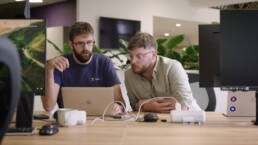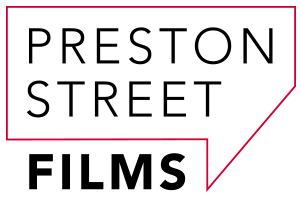How much does video cost?
Video costs can vary a lot depending on what you need — from a simple interview shoot to a cinematic brand film. Having a rough idea of your budget helps us shape a realistic and efficient quote.
As a guide, a basic one-day shoot with interviews and B-roll might start from around £1,800 + VAT.
Costs are affected by things like:
-
Length and complexity
-
Crew size and talent involved
-
Specialist kit (like high-speed cameras)
-
Locations, travel and logistics
-
Post-production time and custom edits
-
Music licensing
The more we know upfront, the better we can tailor the project to your needs — and make every pound work hard on screen.
How long does video production take?
This depends largely on the complexity of the project, but as a general guide, allow around four weeks for pre-production and another four weeks from shoot to final delivery. Of course, if you need it sooner, we can often speed things up – but where possible, it’s best not to rush.
This timeframe allows for proper planning, scripting and refining the brief before filming, and gives enough breathing room in post-production for feedback and revisions.
At the start of the project, we’ll agree a schedule with you – often beginning with your deadline and working backwards from there. We’ll then create a Scope of Work, which includes the agreed costs, payment terms and a clear timeline with key milestones, so you know exactly what to expect and when.
Throughout the process, we’ll keep in regular contact. You’ll have a single point of contact on our team, so there’s always someone available to answer questions or resolve issues.
We’re used to working to tight deadlines – and with good planning and clear communication, we’ll deliver your video on time and on budget.
What kind of video should we make?
If you’re new to video production, it can feel a bit overwhelming – but don’t worry! You don’t need to have a fully developed idea when you get in touch. Simply let us know what you’re aiming to achieve with your video, and we’ll guide you through the options to help you choose the best approach to bring your vision to life.
What should we include in our video?
This depends on the video’s objective and style, but the principle of “Less is More” is always worth considering. Trying to include too much in one video can overwhelm your audience, while a simple, well-told story can leave them eager to engage and learn more.
Deciding what to include (and what to leave out) is best done during the planning and pre-production stages. Avoid the temptation of the “let’s just film everything and cut out what we don’t need in the edit” approach-it can be costly, inefficient, and counterproductive.
We’re here to help guide you through this process, refining your story before the shoot to ensure a smooth production.
Can we make changes during the edit?
Absolutely! We typically work with a 3-round revision process, giving you the opportunity to provide feedback at key stages: the Rough Cut, Fine Cut, and Final Cut.
- Rough Cut: This is the first draft where we’ll present the video with all the main footage in place. It’s your chance to see how the story is coming together and suggest any big-picture changes.
- Fine Cut: After incorporating your feedback from the Rough Cut, the Fine Cut will refine the edits, focusing on pacing, transitions, and any further adjustments to the content.
- Final Cut: This is the polished version, where we’ll make final tweaks to colour grading, sound, and any last-minute changes to ensure the video is ready for release.
When we begin a project, we’ll walk you through our feedback process, which we’ve fine-tuned over the years to make post-production as smooth and efficient as possible. This ensures we stay on track and that your vision comes through in the final video.
What video formats can you deliver in?
We can deliver videos in all the popular formats, whether it’s for Instagram, YouTube, TV commercials, or even for cinema screenings! Each platform has its own technical specifications, so just let us know where you plan to use the video, and we’ll ensure it meets the required format, resolution, aspect ratio, and any other platform-specific needs.
Whether you need a quick, social-friendly clip or a high-resolution version for broadcast, we’ve got you covered!
What is the process of making a video?
Making a video is a multi-step process that involves three main stages: Pre-production, Production, and Post-production.
- Pre-production
This is the planning phase, where we lay the groundwork for the entire project. It includes:
- Concept development: We work with you to define the purpose of the video and its key message.
- Scriptwriting: Once the concept is clear, we’ll craft a script that brings your ideas to life.
- Storyboarding: We visualise the video’s scenes, helping plan the flow and decide on key shots.
- Casting & Location scouting: If needed, we select the right talent and choose the perfect locations for shooting.
- Scheduling & Budgeting: We finalise a timeline and budget to ensure the shoot stays on track.
- Production
This is the actual filming stage where all the planning comes to life. It involves:- Setting up: We prepare the set, gather the crew, set up lighting and equipment, and make sure everything’s ready to go.
- Filming: The video is shot according to the script and storyboard, with the crew capturing the footage, sound, and visuals.
- Directing: Our director ensures everything aligns with your vision, guiding talent and crew to get the best shots.
- Post-production
After filming, we move into editing, where the magic happens. This phase includes:- Editing: We assemble the footage into a cohesive story, trimming, arranging, and refining the content.
- Sound design & Music: We add background music, sound effects, and voiceovers to enhance the video.
- Colour grading: We adjust the colours to give the video a professional, polished look.
- Graphics & Animation: If needed, we incorporate any visual effects, graphics, or animations to elevate the video.
- Rounds of feedback: We work with you through 3 rounds of feedback:
- Rough Cut: This is the first version of the video, where you’ll see the basic structure and flow. It’s your chance to provide high-level feedback on things like pacing and content.
- Fine Cut: After incorporating your feedback from the Rough Cut, the Fine Cut refines the details. We focus on adjustments to timing, transitions, and any changes in content.
- Final Cut: This is the polished version. After the final tweaks, we make sure the video is ready for delivery, and you get a chance to approve the final product.
- Final approval: Once all feedback is incorporated, the video is ready for delivery. We make sure everything aligns with your vision before it’s finalised.
Each of these stages is crucial for ensuring that the final video aligns with your vision and meets your goals. We’ll be with you every step of the way, guiding you through the process and ensuring a smooth and successful project!
Can you create video in different languages?
Absolutely! We have extensive experience in creating video content in multiple languages. Whether it’s translating English content into other languages or adapting foreign language content into English, we’ve got you covered.
For example, in a recent project for the NHS, we produced video content in 8 different languages, including Polish, Nepali, and Urdu, ensuring the messaging was clear and culturally relevant for each audience.
If you’re looking to create multilingual content for a global or diverse audience, we can help make sure your message resonates across different languages and cultures.
Do you make podcasts?
We do! Podcasts can be an excellent way of promoting a company or a product offering a unique way to build trust, share expertise and connect with your audience in a more personal, in-depth format. They’re easy for listeners to engage with on the go, and ideal for telling stories, discussing ideas or positioning your business as a thoughtful voice in your industry.
Are there any additional fees or costs to consider?
No. At the start of any project, we’ll talk everything through in detail before providing a cost. That quote will cover all aspects of production — including filming, equipment, travel, music and more.
We’ll then draw up a Scope of Work outlining the agreed costs, payment terms, and a clear schedule with key milestones. That way, you’ll know exactly what to expect, when to pay, and when to expect delivery, so there are no nasty surprises.
Do we need to write the script ourselves, or can you help shape the story?
You don’t need to come to us with a finished script — or even a fully formed idea. Part of our role is helping you shape your message and tell your story in a clear, engaging way. We’ll work with you to understand your goals, audience and tone, then develop a script or structure that fits. Whether you’d like us to write it from scratch or help refine what you already have, we’re happy to help.
How will the project be managed?
From the outset, we aim to make the process clear, collaborative and stress-free. You’ll have a single point of contact throughout the project — someone who knows the details, understands your goals, and is always available to answer questions or handle any issues that come up.
We’ll begin by agreeing a Scope of Work, which outlines the timeline, budget, key milestones and deliverables. As the project progresses, we’ll keep in regular contact to update you on what’s happening, flag any potential changes, and make sure everything stays on track.
Our team is experienced at keeping projects running smoothly — whether it’s a simple one-day shoot or a multi-location production. Good planning, open communication and clear expectations are at the heart of how we work.
Want more information on how to use video for marketing?

Glossary
Here’s a handy glossary of some of the terms that get thrown about in the world of video.
Aspect Ratio
The proportional relationship between a video’s width and height (e.g., 16:9 for widescreen, 1:1 for square videos).
B-roll
Supporting footage used to complement the main shots — for example, cutaways to hands, products, locations, or audiences to add visual interest and cover edits.
Call Sheet
A document sent out to all cast and crew ahead of a shoot day, containing the schedule, location details, contact numbers, and any special instructions.
Colour Grading
The process of enhancing and adjusting the colours and tones of the footage during post-production, to create a consistent or stylised look.
Cutaway
A shot that briefly interrupts the main action to show related detail, helping to add context or smooth over edits.
Frame Rate
The number of frames shown per second in a video. In the UK, the standard frame rate for broadcast and most video content is 25fps, while 50fps is often used for slow motion or particularly smooth footage. For a cinematic feel, 24fps is sometimes used and for really slow motion we shoot at high frame rates of 100fps or more.
Lower Third
A text overlay positioned in the lower third of the screen, typically used to introduce names, job titles, locations, or other key information.
Pre-production
The planning and preparation stage before any filming begins. It includes activities such as developing the concept, writing scripts, creating storyboards, casting, scouting locations, and scheduling.
Production
The stage where filming takes place. This is where all the planning comes together on set or location to capture the footage.
Post-production
The editing stage where the captured footage is assembled into a finished video. This includes editing, sound design, colour grading, adding graphics, and final mastering.
Rough Cut
An early edited version of the video, giving a first look at structure and flow. It’s used to gather feedback before refining the final version.
Storyboard
A sequence of drawings, images, or frames representing each planned shot of the video, helping everyone visualise the project before filming.
Talking Head
A shot of a person speaking directly to the camera, commonly used in interviews, corporate films, and documentary-style videos.
Tracking Shot
A shot where the camera moves smoothly alongside or towards the subject, often using tracks, dollies, gimbals, or steady rigs.
Voiceover (VO)
Narration recorded separately and played over video footage, often used to guide the audience or explain information not covered by visuals.
Wide Shot (WS)
A shot that frames the subject fully within the surroundings, giving context to the scene.
Got any more questions?
If you have any more questions, please don’t hesitate to get in touch.
Give us a call, send an email, message us on social media or – if you’re in Exeter – come to our studio and say hello in person!
We’re always very happy to meet new people, hear new stories and make new connections.



